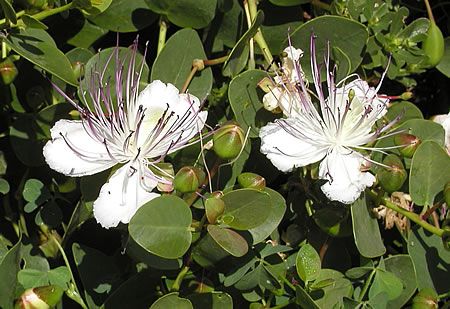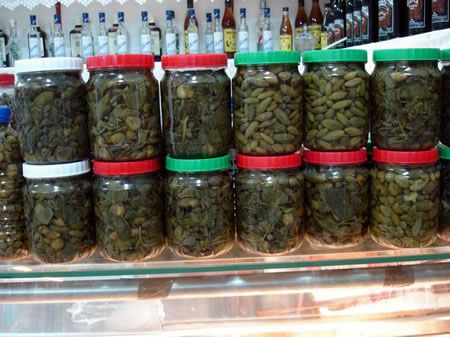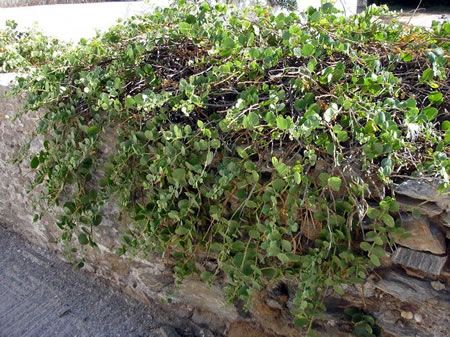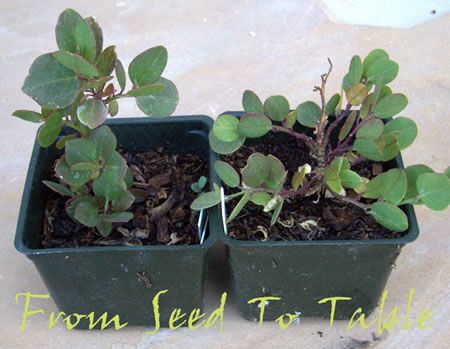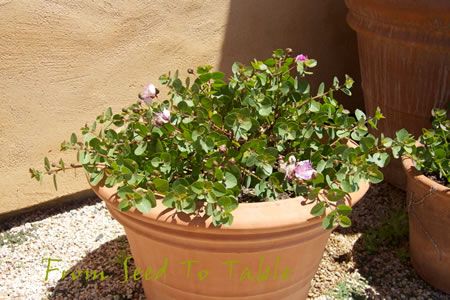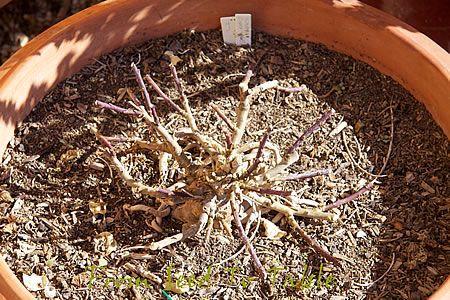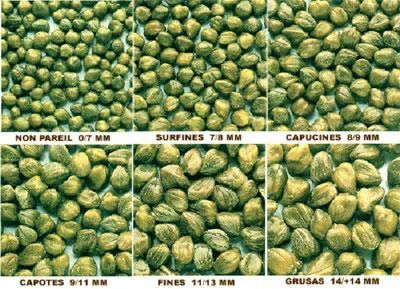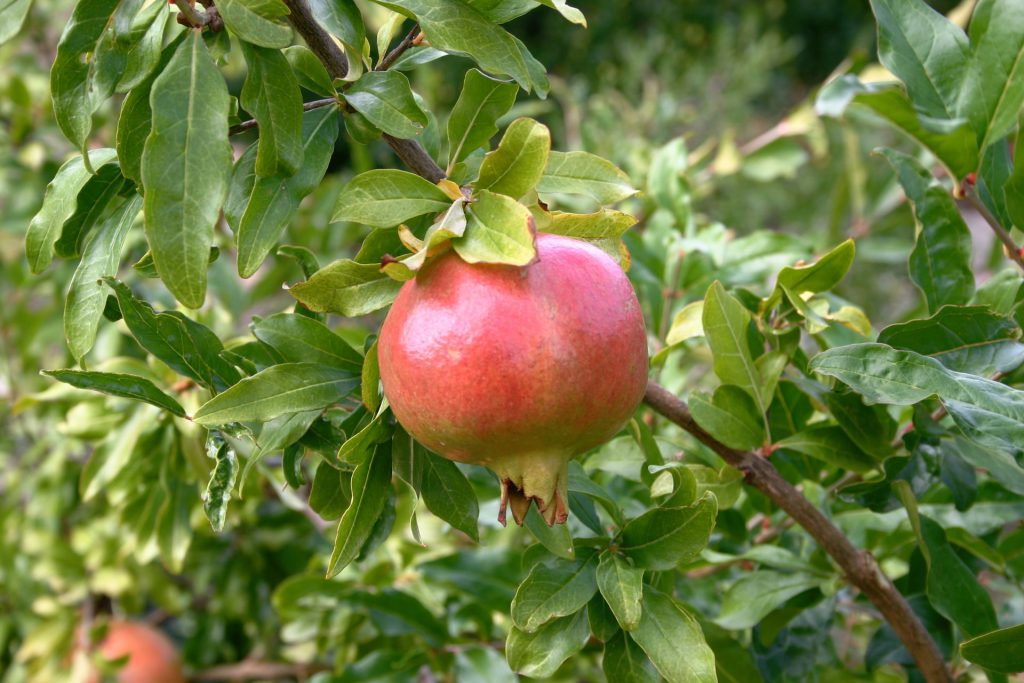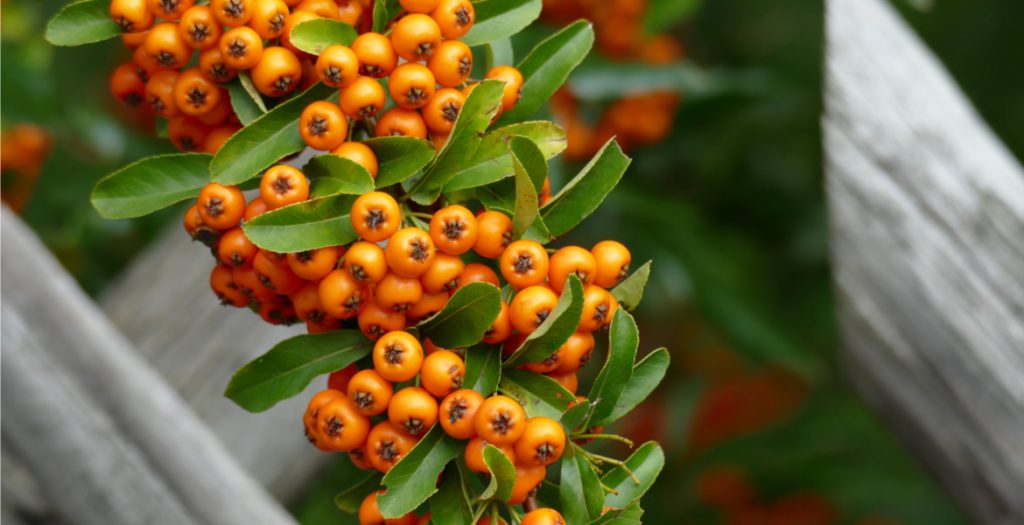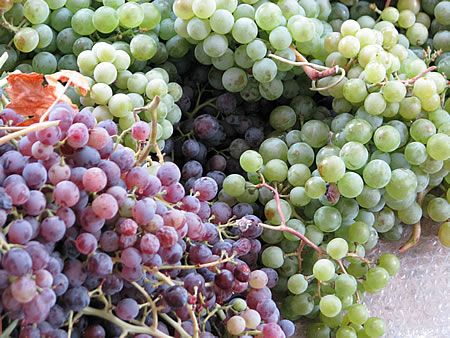Tips for growing caper plants.
The caper plant (Capparis spinosa) is a perennial deciduous shrub. Capers, is the immature bud of the plant, which is harvested and preserved as food.
Capers are used as appetizers, in salads, or in omelets. Their distinctive flavor makes them a sought-after appetizer or garnish. Their expensive price, however, makes us more reserved than we would like.
Capers in jars
Many people also eat caper leaves after boiling them. They have a slightly bitter taste, but many people like them.
Caper plant on a wall in Kythnos, Greek island
We meet caper plants growing freely in nature. We usually find them on old walls, dry stone walls or rocks. It is a Mediterranean plant and thrives in dry and semi-arid areas.
Caper plant in Mallorca
The caper plant grows in places that have full sunshine and hot to very hot summers. In summer the caper can withstand temperatures above 40 degrees Celsius. In winter, however, it is delicate and cannot tolerate freezing temperatures. It can, however, withstand prolonged cold weather without sudden drops. It does not like places with humidity.
Caper plants manage and thrives in clay, sandy, stony, gravelly soils with less than 1% organic matter! It is truly a remarkable plant.
Where can you grow caper plants?
You can grow caper plants in the field or even in pots.
But I must warn you that growing caper plants is not easy.
The plant starts to bear fruit after the first 2 years and the production continues for decades.
What kind of soil does caper plants need?
Care needs to be taken in the soil in which the caper is planted.
Grow caper plants in pots
If you plant caper plant in a pot, the first 20 to 30 cm of soil should be clay, stony, stony, soil, too well drained. You can mix this top layer with some organic fertilizer, e.g. compost. The next layer, can contain soil or compost.
Grow caper plants in the garden
If you plant caper plants in the garden, then, unlike what vegetables need, you should choose a place with clayey, stony soil, very well-drained, with full sunsine. The place should not be located at an altitude higher than 1000 meters.
You can also create artificial dry stone walls where the gap between the stones is covered with soil. In nature, the soil between the stones is created over the years and through the process of natural wear and tear. In an artificial environment, you will have to add it yourself.
How much sun does the caper plant needs?
Caper plants should be in a place where they can see the sun at all times. Caper plants can withstand temperatures above 40 degrees Celsius.
Choose a part in your garden that is not shaded by trees or man-made structures.
Place the pots in a place where the sun can see it at all hours.
How much watering does the caper plant needs?
For the first two years, caper plants need infrequent but constant watering. Thereafter, the plant needs practically no or very infrequent watering. It has practically the same watering requirements as cacti!
How much fertilizer does caper plants need?
It needs practically little, almost no fertilizer.
Starting caper plants from seed
Searching, I found dozens of descriptions of how to treat caper seed before planting it. Most of the methods were complicated and involved soaking in water, placing in the refrigerator, etc. The experiences of those who tried them were disappointing.
But I found Michelle from California, who describes ways she tried that worked.
You should use fresh caper seeds. The germination rate on the fresh seeds is up to 95%. Capers that are a year old have a germination rate of 75% to 80%.
In Mediterranean regions, such as Greece, there is no need to cool the seeds before planting. The natural moderate temperatures of the Mediterranean climate provide all the cooling the seed needs.
You should not disturb their roots. Capers react badly when their roots are disturbed and they wilt.
After these basics, let’s start with the process Michelle describes.
Use a seed tray.
Sow the caper seeds from September to November.
In each position of the seed tray, place 6 seeds.
Place the seed tray outside in a place that has sun and shade, depending on the time of day.
Protect the surface of the seed tray with a mesh if you wish.
“Forget” the seeds and the seedbed until late February, early March.
In late February or early March, move the seedbed to a place where it can see the sun. In 2 to 3 weeks, the seeds should begin to germinate.
Caper plants in seedling cups
After about 2 months, and when the caper plants have 2 or more actual leaves and their roots have grown enough to support the surrounding soil, you can transplant them into pots. The pots you transplant them into should be 10 cm or more in diameter. If more than one plant has come up in any one spot in the planter, do not attempt to take out the second plant. Just cut it back to the level of the soil. In these pots, the plants will grow for the rest of the year. Although in nature, caper plants do not need watering, the soil in the pots dries out very quickly. They should be watered lightly once or twice a week during the summer months.
Transplanting the caper plant
The following winter or spring, you will be able to transplant them into larger pots that hold at least 65 liters of soil. The pots should be placed where the sun can see it all day. Again, because the soil in the pots loses its moisture quickly, especially when the pots are in the sun, you will need to water them.
Caper plants in pots
At the end of the second year, you will have the first caper flowers.
Plants that are older than two years can be pruned in winter when they go dormant.
Heavily pruned caper plants
Caper plants produce flowers on young shoots. So you should prune it vigorously to encourage the formation of new shoots that will bear flowers.
After two years, you can attempt to transplant the caper plants into the soil if you wish. The ideal place is at the top of dry stones so that the branches can hang down. Choose south-facing locations Prepare for low success rates, though.
Capers (edible flower buds)
The commercial value of capers is inversely proportional to their size.
Categories of capers sizes
Capers are classified and sold according to their size. The classification is as follows:
- Non-Pareil (smaller than 7 mm)
- Surfines (smaller than 7 to 8 mm)
- Capucines (from 8 to 9 mm)
- Capotes (from 9 to 11 mm)
- Fines (from 11 to 13 mm)
- Grusas (greater than 14 mm)
The small capers are the most valuable.
Famous are Santorini’s capers
Famous are all around the world, Santorini’s Greek island capers.
The volcanic soil and the watering mainly from Aegean sea moist, leads to cabers that have a unique taste and flavor.
Although caper plants can grow in various Mediterranean places, Santorini’s capers are unique in flavor.
That is why they are among the most expensive.
Note
This article is not intended as a guide to growing caper plants. Growing caper plants from what I understand is difficult. There are certainly many secrets and experiences that are not covered in this article. I hope this article will be an inspiration for some of us to try caper plants into our gardens.
Sources
Growing Capers From Seed
caperplants.com
https://en.wikipedia.org/wiki/Caper
Tags: CAPER • CAPER LEAVES • CAPERS • CULTIVATE • CULTIVATION • DRY STONE • GARDEN • POT • POTS • SOW • SOWING

